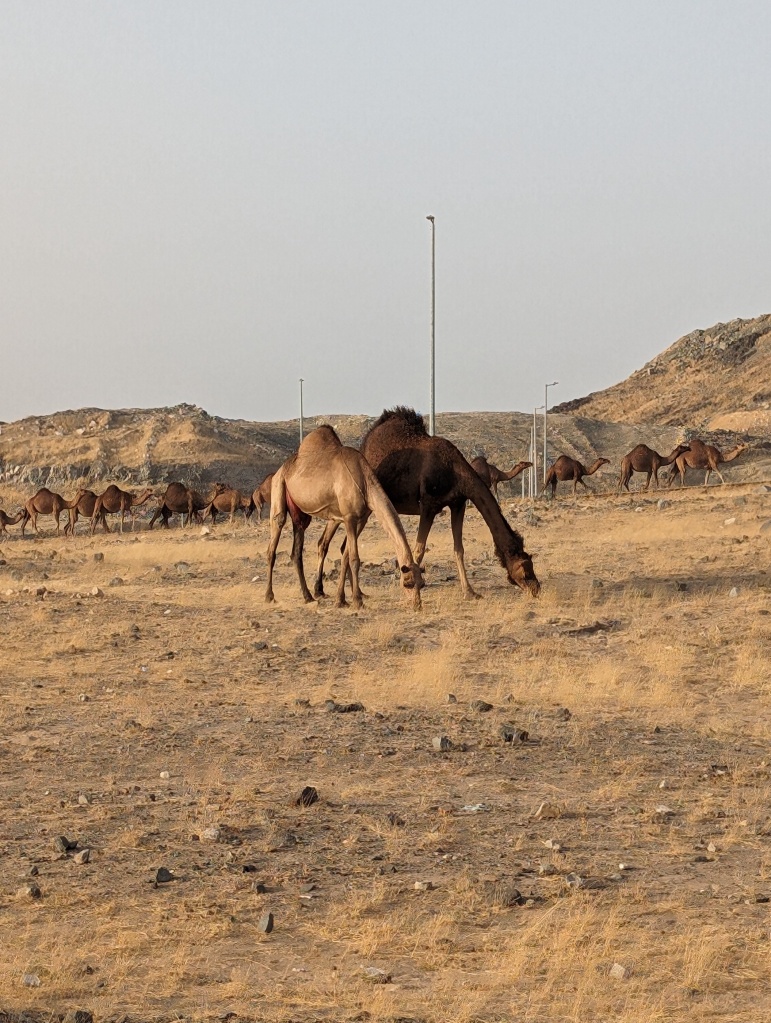There’s no straightforward answer to the question, Where is the best area in the Makkah region to spot camels? Unless you operate on camel-time (or happen to be a camel herder yourself), the question may even be impossible to answer.

Dromedaries eating grass in an undeveloped subdivision on the outskirts of Makkah. Taken with Google Pixel 8.
The dromedary (yes, I learned this term this very moment of writing) is a bit of an enigmatic animal to me – it exists in my mind somewhere on the intersection of having the odd proportions of a llama, the muscular disposition of a horse, and the grazing tendencies of cattle. It’s tall, historic, and representative of the entire geographic region of Arabia in the eyes of a foreigner. Its presence is difficult to ignore against the sterile desert. Also, as it goes without saying, the dromedary does not exist in Ohio outside of zoos so seeing camels grazing openly is perplexing to me.
I knew when coming to Saudi Arabia I would likely see at least one camel, after all if I ask what comes to your mind if I said the words desert and animal, I suspect the idea of camel wouldn’t be too far away. However, what I didn’t consider was their grazing tendencies along highways and roads, their sheer size, and their striking, difficult to define aloofness.

I’d never given it much thought, but there are different types of camels, and in contrast to its double humped cousin the Bactrian camel of central Asia, the dromedary only has one hump and exists primarily in North Africa and Arabia.
According to the Wikipedia page on the single-humped camel, dromedaries have not occurred naturally in the wild for approximately 2,000 years. I cannot deny this claim, but my own eye-witness testimony does lean into dromedaries existing in the domesticate-only variant. On outskirts of Makkah, camels can be seen grazing in herds (flocks, trains, caravans, packs?) ranging in size from 15-50 camels – wandering around eating grasses grown from the scant amounts of rain from the rainy season, guided by a camel herder riding on a camel of his own.
I doubt I need to state this, but camels are big – they stand at around 6 ft to 8 ft tall at the shoulder and weigh approximately half a ton. Camels can be nearly black in color to nearly white. One additional note on the physical appearance of the dromedary: they move both legs on one side of their body at the same time when they walk and seem to glide keeping their heads level to their back.

The camel’s deliberate slow-pokiness and indifference to the problems of yesterday and tomorrow remind me of looking out to any animal pasture and feeling time itself slow, the breeze which blows the grass becomes more apparent, and stresses subside.
The question I began with still doesn’t have a direct answer, but the best answer, in my opinion, is that just outside of Makkah where the city ends, with a bit of luck, a herd might be poking around.

Camels grazing. Taken with Google Pixel 8.
Cheers.
Leave a comment